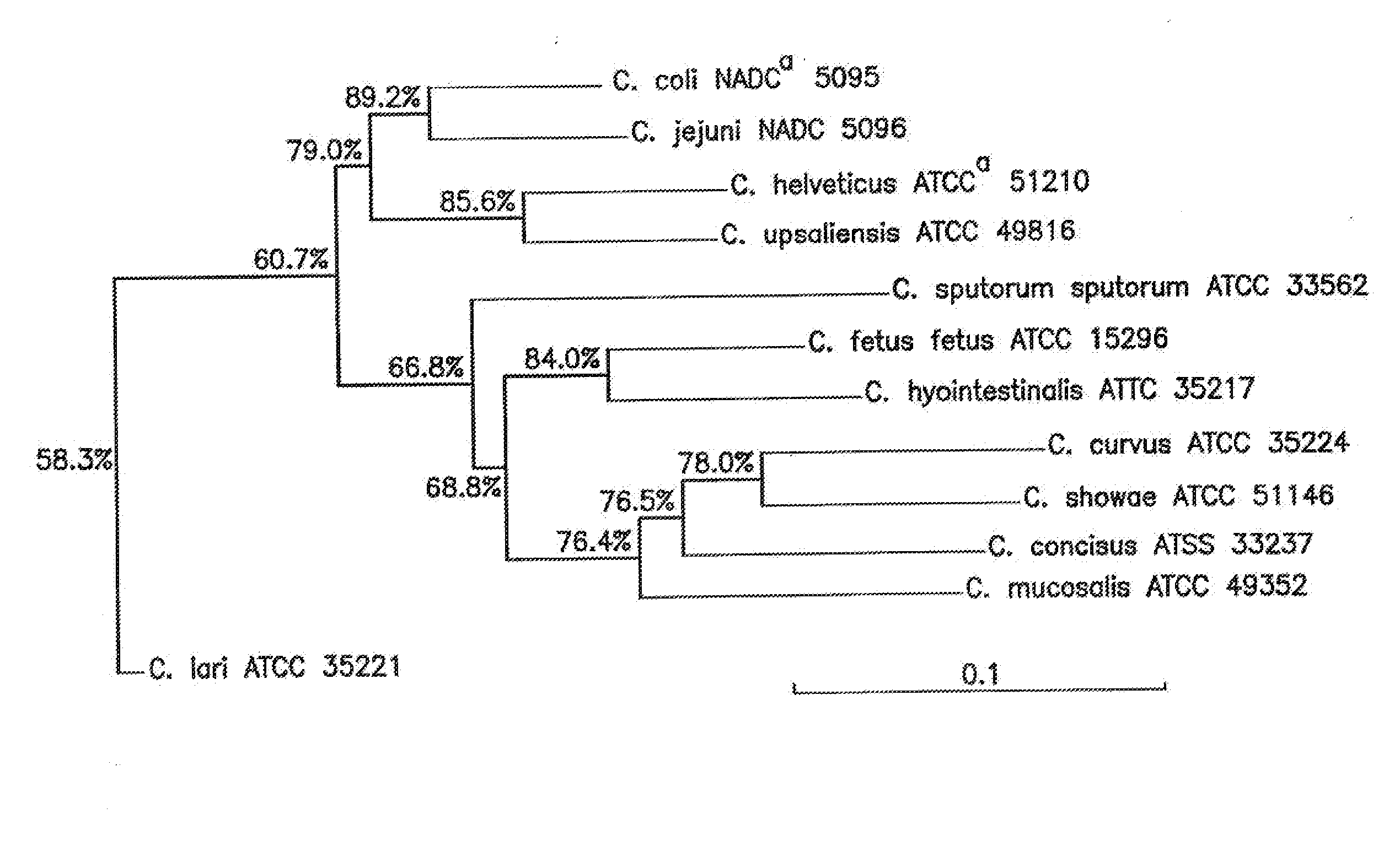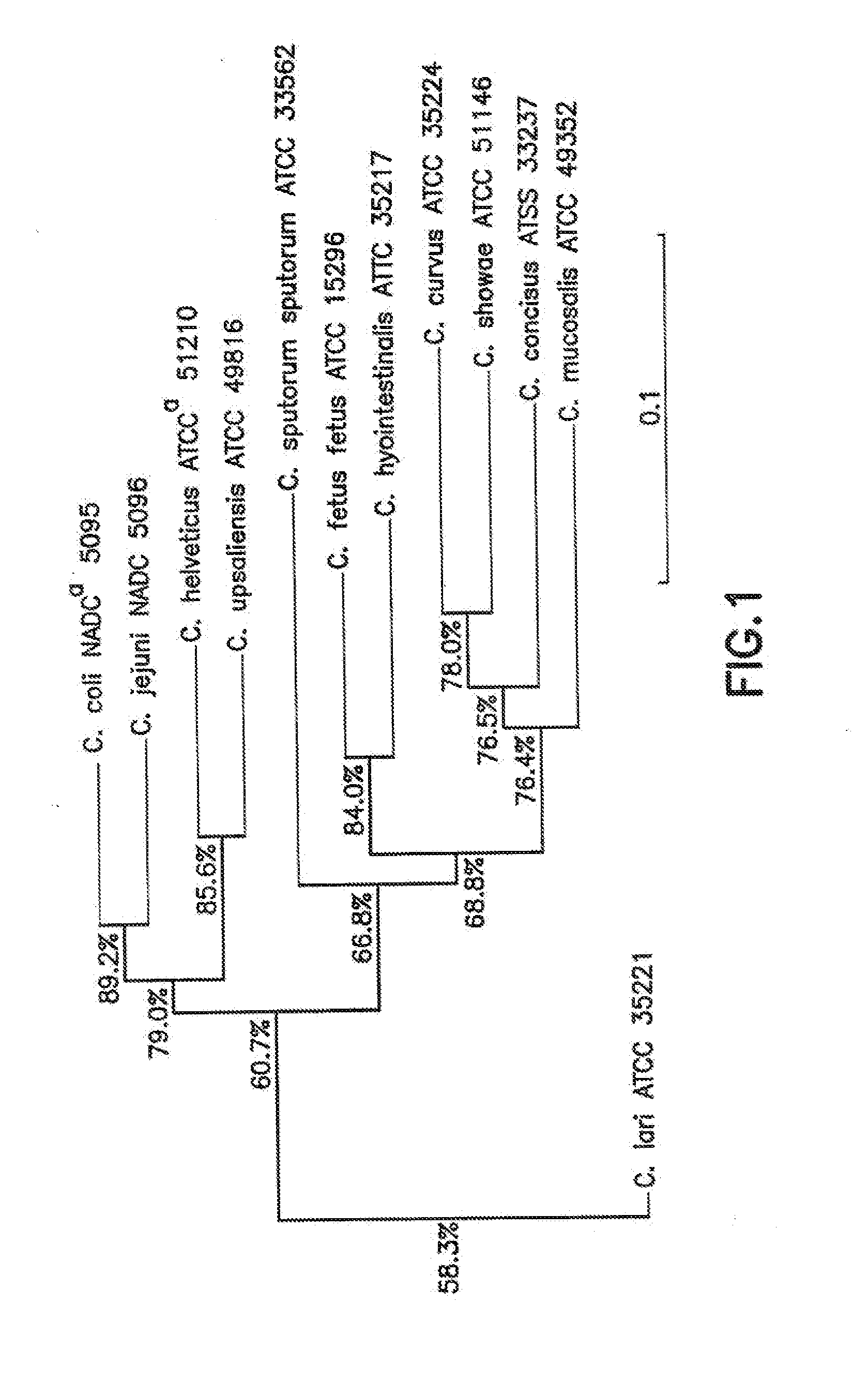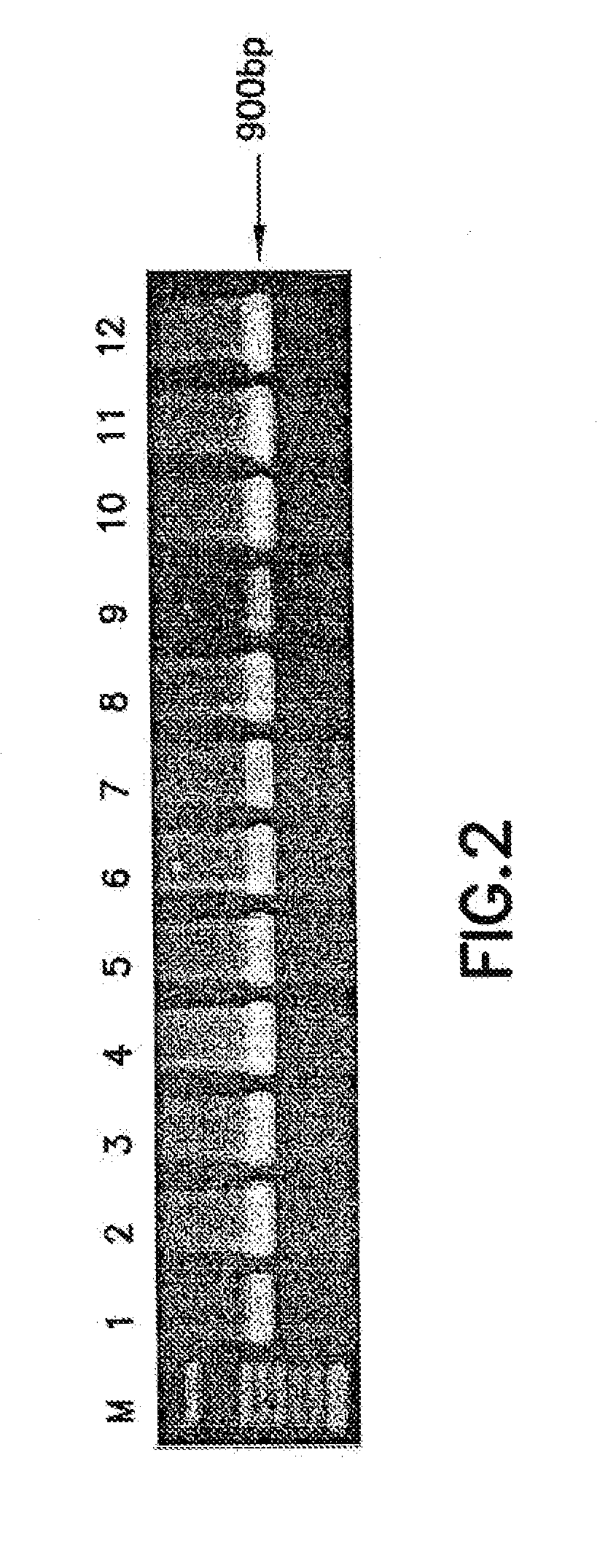Genetic methods for speciating Campylobacter
a technology of campylobacter and gene expression, applied in the field of gyrase b, can solve the problems of difficult interpretation of results, major risk factor of acquisition of travel to developing countries, and difficulty in identifying sources of infection through epidemiological investigations
- Summary
- Abstract
- Description
- Claims
- Application Information
AI Technical Summary
Benefits of technology
Problems solved by technology
Method used
Image
Examples
example 1
Bacterial Strains
[0054]The sequences of the gyrB gene from a total of 19 strains of various species of Campylobacter were analyzed: 4 strains of C. jejuni (Table 1) and also C. jejuni RM1221 Acc. No. NC—003912 and C. jejuni subsp. jejuni NCTC 11168, Acc. No. NC—002163; C. coli NADC 5085 (National Animal Disease Center, Ames, Iowa); C. concisus ATCC 33237 (American Type Culture Collection, Manassas, Va.); C. curvus ATCC 35224; C. showae ATCC 51146; C. mucosalis ATCC 49352; C. fetus subsp. fetus ATCC 15296 and C. fetus NADC 5513; C. fetus subsp. venerealis NADC 5519; C. hyointestinalis ATCC 35217; C. sputorum biovar sputorum ATCC 33562; C. helveticus ATCC 51210; C. upsaliensis ATCC 49816; and C. lari ATCC 35221. These strains and other bacterial strains used in this study for determining the specificity of the PCR assays are listed in Table 1.
TABLE 1Bacterial strains.Strain designation / Bacterial strainsourceC. jejuni subsp. jejuniATCCa 33250C. jejuniNADCb 2682C. jejuniNADC 5523C. jeju...
example 2
PCR Amplification and Sequencing of the Campylobacter gyrB Gene
[0055]Campylobacter strains obtained from the ATCC were grown according to conditions specified by the ATCC. Genomic DNA from these strains and from the E. coli and Salmonella strains listed in Table 1 was extracted using the PrepMan Ultra Reagent (Applied Biosystems, Foster City, Calif.) according to the manufacturer's instructions. DNA from strains obtained from the NADC listed in Table 1, graciously provided by Dr. Irene Wesley (USDA, ARS, NADC), had been purified by cesium chloride density gradient ultra-centrifugation and stored at −20° C.
[0056]PCR amplification of the gyrB gene for direct sequencing of the PCR products was performed using a GeneAmp 9700 thermal cycler (Applied Biosystems). The universal primer set for PCR amplification of ca. 1,250 bp (1253 or 1256 bp) of the gyrB gene region from all strains was 5′-TAA TAC GAC TCA CTA TAG GGG TCG ACC AVG CNG GNG GNA ART TYG A-3′ (SEQ ID NO:1; T7-FWD; T7 promoter s...
example 3
Phylogenetic Analysis of DNA Sequences
[0058]To evaluate whether differences in gyrB sequences could be employed to reliably discriminate among Campylobacter species, it was necessary to quantify the interspecies gyrB DNA sequence variation. The gyrB sequences of 12 species of Campylobacter were aligned using the DNASYS Pro program (Version 2.0) (Hitachi, Tokyo, Japan). The data were used as input for phylogenetic analysis using the neighbor-joining method (Saito and Nei. 1987. Mol. Biol. Evol. 4: 406-425) and the CLUSTAL W program (Tompson et al. 1994. Nucleic Acids Res. 22: 4673-4680) in the DDBJ (DNA Data Bank of Japan) website (www.ddbj.nig.ac.jp / Welcome-e.html). Multiple alignments of 12 Campylobacter gyrB sequences were performed, and a matrix representing the sequence variations among the strains analyzed was calculated. Subsequently, a dendrogram was constructed from these data (FIG. 1). Analysis of the dendrogram showed that all 12 Campylobacter species were clearly differen...
PUM
| Property | Measurement | Unit |
|---|---|---|
| Tm | aaaaa | aaaaa |
| Tm | aaaaa | aaaaa |
| TM | aaaaa | aaaaa |
Abstract
Description
Claims
Application Information
 Login to View More
Login to View More - R&D
- Intellectual Property
- Life Sciences
- Materials
- Tech Scout
- Unparalleled Data Quality
- Higher Quality Content
- 60% Fewer Hallucinations
Browse by: Latest US Patents, China's latest patents, Technical Efficacy Thesaurus, Application Domain, Technology Topic, Popular Technical Reports.
© 2025 PatSnap. All rights reserved.Legal|Privacy policy|Modern Slavery Act Transparency Statement|Sitemap|About US| Contact US: help@patsnap.com



